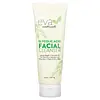What's inside
What's inside
 Key Ingredients
Key Ingredients

 Benefits
Benefits

 Concerns
Concerns

 Ingredients Side-by-side
Ingredients Side-by-side

Water
Skin ConditioningAloe Barbadensis Leaf Juice
Skin ConditioningGlycerin
HumectantPanthenol
Skin ConditioningTocopheryl Acetate
AntioxidantSodium Ascorbyl Phosphate
AntioxidantCaesalpinia Spinosa Gum
Skin ConditioningPalmitoyl Tetrapeptide-7
Skin ConditioningPalmitoyl Tripeptide-1
Skin ConditioningArctostaphylos Uva Ursi Leaf Extract
Skin ConditioningGlycyrrhiza Glabra Root Extract
BleachingXanthan Gum
EmulsifyingSclerotium Gum
Emulsion StabilisingCitric Acid
BufferingAlcohol
AntimicrobialButylene Glycol
HumectantThioctic Acid
AntioxidantCarbomer
Emulsion StabilisingPropylene Glycol
HumectantPolysorbate 20
EmulsifyingPotassium Sorbate
PreservativeSodium Benzoate
MaskingWater, Aloe Barbadensis Leaf Juice, Glycerin, Panthenol, Tocopheryl Acetate, Sodium Ascorbyl Phosphate, Caesalpinia Spinosa Gum, Palmitoyl Tetrapeptide-7, Palmitoyl Tripeptide-1, Arctostaphylos Uva Ursi Leaf Extract, Glycyrrhiza Glabra Root Extract, Xanthan Gum, Sclerotium Gum, Citric Acid, Alcohol, Butylene Glycol, Thioctic Acid, Carbomer, Propylene Glycol, Polysorbate 20, Potassium Sorbate, Sodium Benzoate
Water
Skin ConditioningAloe Barbadensis Leaf Juice
Skin ConditioningDimethyl Sulfone
SolventJojoba Esters
EmollientDecyl Glucoside
CleansingCocamidopropyl Betaine
CleansingCocamidopropyl Hydroxysultaine
CleansingPhenoxyethanol
PreservativeCocamide Mipa
EmulsifyingCarrageenan
Cucumis Sativus Extract
Skin ConditioningDisodium Laureth Sulfosuccinate
CleansingDisodium Lauryl Sulfosuccinate
CleansingAcrylates/C10-30 Alkyl Acrylate Crosspolymer
Emulsion StabilisingLavandula Angustifolia Water
MaskingSodium Hydroxide
BufferingGanoderma Lucidum Extract
Skin ProtectingEthylhexylglycerin
Skin ConditioningGlycolic Acid
BufferingArctium Lappa Root Extract
Skin ConditioningCalendula Officinalis Extract
Skin ConditioningCitrus Grandis Seed Extract
AstringentRosmarinus Officinalis Extract
AntimicrobialSalix Alba Bark Extract
AstringentSimmondsia Chinensis Seed Oil
EmollientTrifolium Pratense Leaf Extract
AntioxidantOlea Europaea Fruit Oil
MaskingPotassium Sorbate
PreservativeSodium Benzoate
MaskingAlcohol
AntimicrobialCentella Asiatica Extract
CleansingEquisetum Arvense Extract
AstringentGeranium Maculatum Extract
TonicTaraxacum Officinale Extract
Skin ConditioningBorago Officinalis Seed Oil
EmollientRosa Canina Fruit Oil
EmollientCitrus Aurantium Dulcis Peel Extract
Emulsion StabilisingOriganum Vulgare Extract
Skin ConditioningTocopheryl Acetate
AntioxidantWater, Aloe Barbadensis Leaf Juice, Dimethyl Sulfone, Jojoba Esters, Decyl Glucoside, Cocamidopropyl Betaine, Cocamidopropyl Hydroxysultaine, Phenoxyethanol, Cocamide Mipa, Carrageenan, Cucumis Sativus Extract, Disodium Laureth Sulfosuccinate, Disodium Lauryl Sulfosuccinate, Acrylates/C10-30 Alkyl Acrylate Crosspolymer, Lavandula Angustifolia Water, Sodium Hydroxide, Ganoderma Lucidum Extract, Ethylhexylglycerin, Glycolic Acid, Arctium Lappa Root Extract, Calendula Officinalis Extract, Citrus Grandis Seed Extract, Rosmarinus Officinalis Extract, Salix Alba Bark Extract, Simmondsia Chinensis Seed Oil, Trifolium Pratense Leaf Extract, Olea Europaea Fruit Oil, Potassium Sorbate, Sodium Benzoate, Alcohol, Centella Asiatica Extract, Equisetum Arvense Extract, Geranium Maculatum Extract, Taraxacum Officinale Extract, Borago Officinalis Seed Oil, Rosa Canina Fruit Oil, Citrus Aurantium Dulcis Peel Extract, Origanum Vulgare Extract, Tocopheryl Acetate
Ingredients Explained
These ingredients are found in both products.
Ingredients higher up in an ingredient list are typically present in a larger amount.
Alcohol comes in many different forms. Different types of alcohol will have different effects on skin. This ingredient is usually an astringent alcohol.
These alcohols are drying on the skin. They may strip away your skin's natural oils and even damage your skin barrier. Astringent alcohols may also irritate skin.
Other types of astringent alcohols include:
According to the National Rosacea Society based in the US, you should be mindful of products with these alcohols in the top half of ingredients.
Any type of sanitizing product will have high amounts of alcohol to help kill bacteria and viruses.
Fatty alcohols come from plant oils such as coconut oil. These can help hydrate the skin and are non-irritating. Some fatty alcohols include cetyl and stearyl alcohol.
Learn more about AlcoholAloe Barbadensis Leaf Juice comes from leaves of the aloe plant. Aloe Barbadensis Leaf Juice is best known for helping to soothe sunburns. It is also anti-inflammatory, moisturizing, antiseptic, and can help heal wounds.
Aloe is packed with good stuff including Vitamins A, C, and E. These vitamins are antioxidants, which help fight free-radicals and the damage they may cause. Free-radicals are molecules that may damage your skin cells, such as pollution.
Aloe Barbadensis Leaf Juice also contains sugars. These sugars come in the form of monosaccharides and polysaccharides, folic acid, and choline. These sugars are able to help bind moisture to skin.
It also contains minerals such as calcium, 12 anthraquinones, fatty acids, amino acids, and Vitamin B12.
Learn more about Aloe Barbadensis Leaf JuicePotassium Sorbate is a preservative used to prevent yeast and mold in products. It is commonly found in both cosmetic and food products.
This ingredient comes from potassium salt derived from sorbic acid. Sorbic acid is a natural antibiotic and effective against fungus.
Both potassium sorbate and sorbic acid can be found in baked goods, cheeses, dried meats, dried fruit, ice cream, pickles, wine, yogurt, and more.
You'll often find this ingredient used with other preservatives.
Learn more about Potassium SorbateSodium Benzoate is a preservative. It's used in both cosmetic and food products to inhibit the growth of mold and bacteria. It is typically produced synthetically.
Both the US FDA and EU Health Committee have approved the use of sodium benzoate. In the US, levels of 0.1% (of the total product) are allowed.
Sodium benzoate works as a preservative by inhibiting the growth of bacteria inside of cells. It prevents the cell from fermenting a type of sugar using an enzyme called phosphofructokinase.
It is the salt of benzoic acid. Foods containing sodium benzoate include soda, salad dressings, condiments, fruit juices, wines, and snack foods.
Studies for using ascorbic acid and sodium benzoate in cosmetics are lacking, especially in skincare routines with multiple steps.
We always recommend speaking with a professional, such as a dermatologist, if you have any concerns.
Learn more about Sodium BenzoateTocopheryl Acetate is AKA Vitamin E. It is an antioxidant and protects your skin from free radicals. Free radicals damage the skin by breaking down collagen.
One study found using Tocopheryl Acetate with Vitamin C decreased the number of sunburned cells.
Tocopheryl Acetate is commonly found in both skincare and dietary supplements.
Learn more about Tocopheryl AcetateWater. It's the most common cosmetic ingredient of all. You'll usually see it at the top of ingredient lists, meaning that it makes up the largest part of the product.
So why is it so popular? Water most often acts as a solvent - this means that it helps dissolve other ingredients into the formulation.
You'll also recognize water as that liquid we all need to stay alive. If you see this, drink a glass of water. Stay hydrated!
Learn more about Water